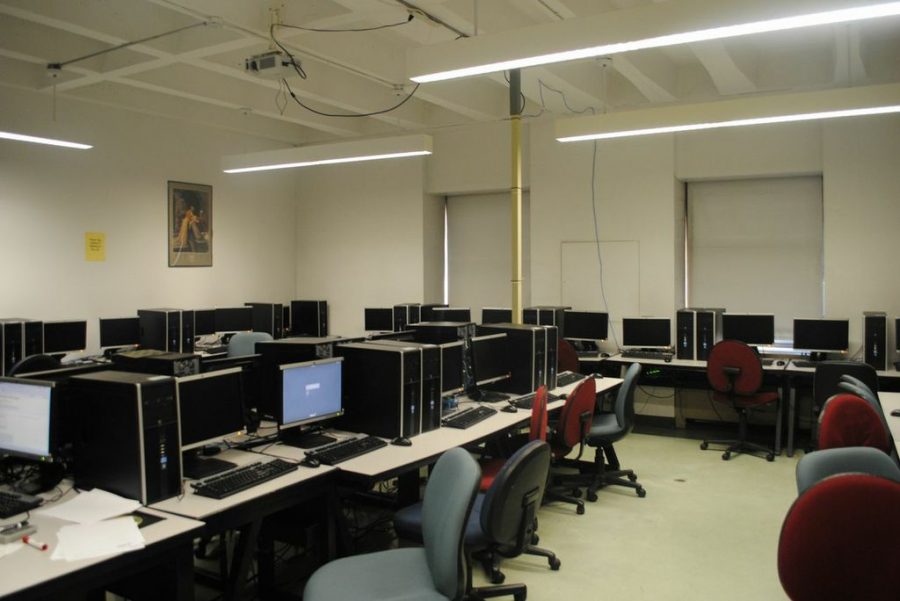By Alexandra Laird
If there is ever a problem with the Wi-Fi connection, the Fordham homepage or the overarching Fordham network, chances are Fordham IT will be the first to be notified.
Fleur Eshghi is the executive director of Instructional Technology Academic Computing (ITAC). She has been working at Fordham for 10 years and leads the division of Fordham IT known as ITAC. She manages most technology services for the University. Eshghi says that the primary mission of ITAC is to provide technology services in support of teaching, learning and research, and the organization is always working to achieve this mission.
In previous years, IT has “upgraded all our classrooms to have access to the most fundamental and commonly used technologies,” Eshgi said. The organization reports that now 100 percent of Fordham classrooms are “smart classrooms,” meaning that they contain updated and regularly updated technologies and applications as requested by professors and students alike. Examples of such extensions include Internet access, classroom lecture recording and Webcasting capabilities. Additionally, Blackboard and other learning management systems allow online learning from home. The graduate school of religion and religious education and the graduate school of social service offer courses completely online and all three campuses have video conferencing capabilities.
Aside from in-classroom technology services, IT has established the Academic Computing Environment (ACE), which is dedicated to experimenting with technology so that faculty members are able to use it for teaching and research. The faculty is constantly encouraged to integrate technology into their lesson plans, and Fordham IT is behind this movement. The three Faculty Technology Centers offer programs, such as assistance in the production of technology materials for teaching, 175 workshops, discussion groups, Fora and training sessions as well as a Faculty E-Grant, which is designed explicitly to support faculty in integrating technology.
Eshghi stipulates that “these efforts are ongoing and expected to continue to be so, as technology and new opportunities for education continue to emerge. He adds, “our goal is to keep abreast of the technological advancement, in order to enable the faculty and students in their academic pursuit.”
Technology has provided so many new opportunities and methods of learning, and education has especially benefited from this revolution.
Eshghi says, “the abilities to learn, collaborate and compete globally; to accommodate different learning styles; to augment and speed up learning processes are among few opportunities that the power of the modern technologies can provide the learner.” This supports the importance of instructional technology services.
However, because of all the new opportunities that technology reveals, it is equally important to learn how to utilize new services properly. It has now become a common expectation for higher education institutions to provide guidance for students about integrating new technology into their learning experience.
“More and more learning processes become collaborative work between instructors, students and information technology providers,” Eshghi said.
As a whole, Fordham IT works in conjunction with the university—faculty and students—as well as other higher education institutions nationwide to bring about the best opportunities in learning. Although there are many propositions regarding improving technological services in the classroom, Eshghi made the general statement for IT, saying that “efforts [to improve technology services for Fordham] are ongoing and are expected to remain so.”







































































































































































































